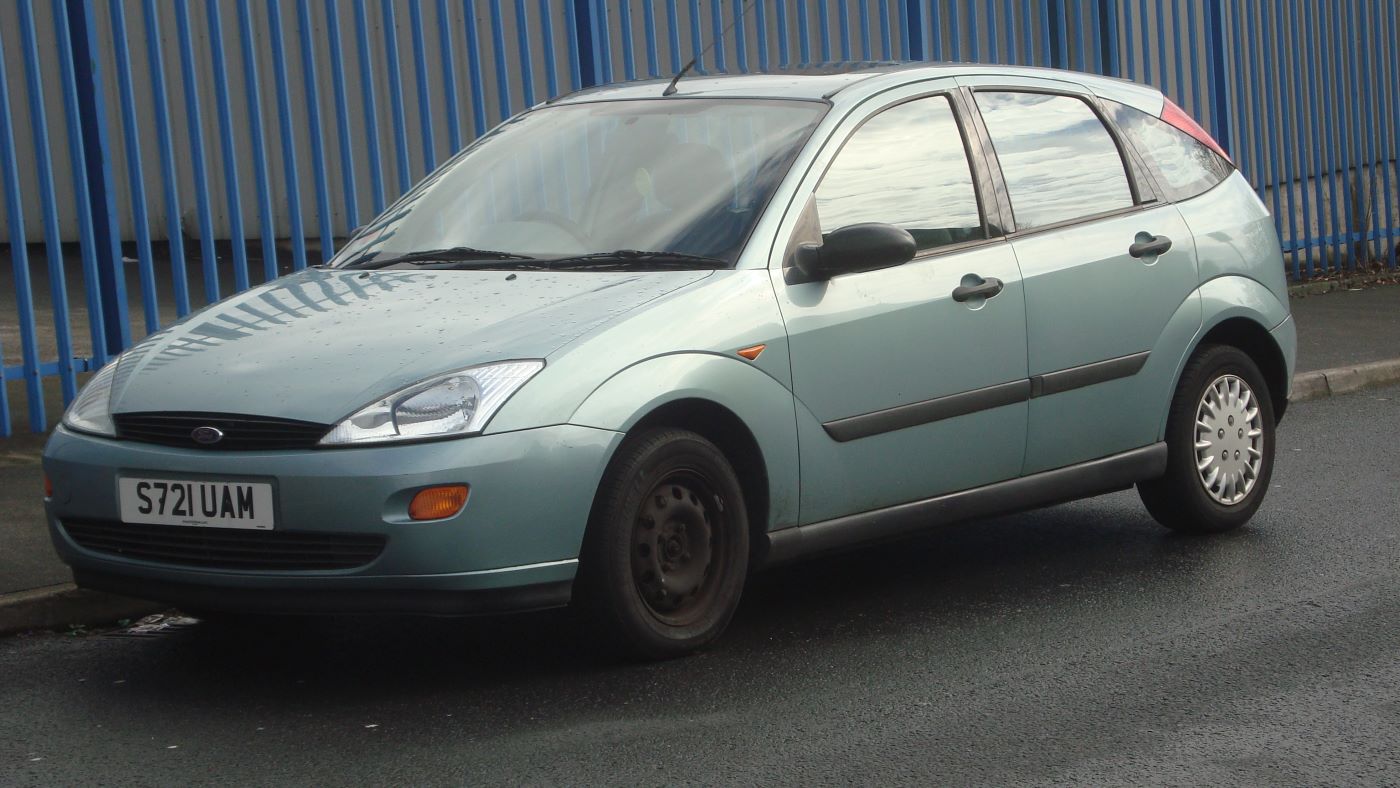While Karl Benz may have created the first automobile in 1886, it was Ford that revolutionized the industry with the introduction of the assembly line alongside the Model T in 1908.
The development of the assembly line is often considered an even more pivotal moment in automotive history, as it allowed cars to become accessible to the general public.
In fact, the price of the Model T continually dropped over time, eventually reaching a point where even factory workers could afford to purchase one.
Over the years, Ford has been responsible for producing several legendary vehicles, such as the Mustang and F-150, both of which surpassed one million units sold a long time ago.
Successful Ford Cars Ever Built
However, there are also many underrated models that aren’t typically mentioned when discussing the most successful Fords of all time.Among American car manufacturers, Ford stands out as the most globally focused.
If you take a look across the Atlantic, you’ll find a range of models not available in the U.S., including the Puma, Focus, Kuga, the Explorer EV, and the recently launched and already controversial Capri.
5. Ford Focus (1998)
Over 16 Million Units
When the Ford Focus debuted in 1998, it was ahead of its time and quickly became a major success across both the Western and Eastern Hemispheres.
For several years, it even held the title of the world’s best-selling car, thanks to its advanced features and dynamic driving experience.
Sadly, changing consumer preferences toward SUVs and crossovers have caused a decline in demand, leading to the Focus being discontinued in the U.S. market.
The debut of the first-generation Ford Focus took place at the 1998 Geneva Motor Show, where the automaker introduced the hatchback version of its compact vehicle.
Although the showcased car featured blacked-out windows that concealed the interior, the 1998 Ford Focus immediately split opinions due to its polarizing exterior design.
Adhering to Ford’s then-new “New Edge” design philosophy—first seen on the 1997 Ford Puma—the Focus featured a combination of curved surfaces and sharp angles that sparked strong reactions. Despite its divisive styling, the car achieved impressive sales figures and even secured the prestigious 1999 Car of the Year award.
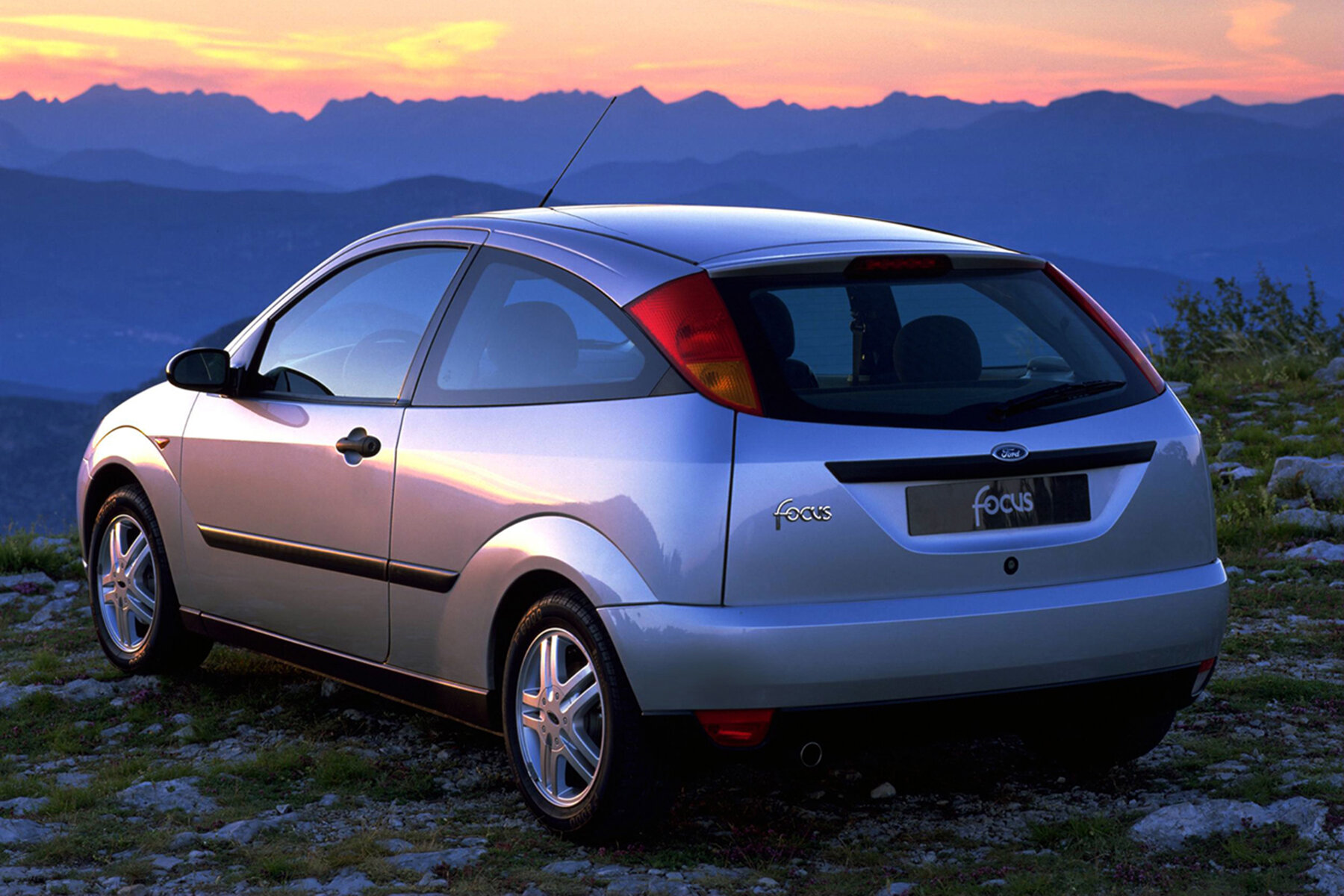
The front end of the Focus was defined by triangular, swept-back headlights, positioned on either side of an elliptical grille that housed Ford’s iconic blue oval emblem.
Behind the badge was a hidden keyhole for manually unlocking the hood—an unconventional yet daring design choice. Turn signals with orange lenses were integrated into the plastic bumper below the headlights, and the lower section of the bumper featured a wide air intake capable of housing triangular fog lights.
From the side, the car exhibited flared contours on the front and rear fenders that extended into the door panels, adding a sporty visual flair. Its rounded roofline began at a wide panoramic windshield and sloped gently toward the rear hatch.
While the five-door version shared the same elliptical window line as its three-door sibling, the effect was subtler. A third side window, located behind the rear doors, enhanced rearward visibility. The sharply angled C-pillars at the back housed triangular taillights that reinforced the design theme.
Inside, the New Edge styling carried over with an elliptically shaped instrument cluster that stretched from the driver’s A-pillar across to the center of the dashboard. Large dials for the speedometer and tachometer were prominently displayed, accompanied by smaller gauges for coolant temperature and fuel level.
The central dashboard featured a pair of oval air vents above the stereo and HVAC controls. Ford fitted the Focus with lightly bolstered front bucket seats and a split-folding rear bench. For those opting for the Ghia trim, the interior was enhanced with leather-wrapped surfaces, elevating the car’s overall feel.
Also Read: 12 Popular Cars Everyone Hates and 10 That Drivers Actually Love
4. Ford Model T (1908)
16.5 Million Units
Most of us wouldn’t be able to own a car today if it weren’t for the Model T. Producing the Model T in massive quantities made it highly affordable.
When it was first released, it had a price tag of $850, but by 1924, that cost had dropped to just $260, which equals $4,786 today. As mentioned earlier, Ford aimed to make the Model T accessible to everyone, and the sales numbers clearly reflect that goal.
What makes the Model T even more remarkable is its extended production run, which lasted nearly 20 years, with more than 16.5 million units sold. At one point, half of all the cars on the road worldwide were Model Ts.
After spending his early years in the automobile industry experimenting with different models, Henry Ford ultimately streamlined the company’s focus to a single vehicle—the Model T—which went on to become the first mass-produced car in history.
A landmark in automotive development, the Model T debuted in October 1908 and marked the beginning of Ford’s one-model production strategy. This approach would result in over 15 million units sold worldwide before production ended in 1927.
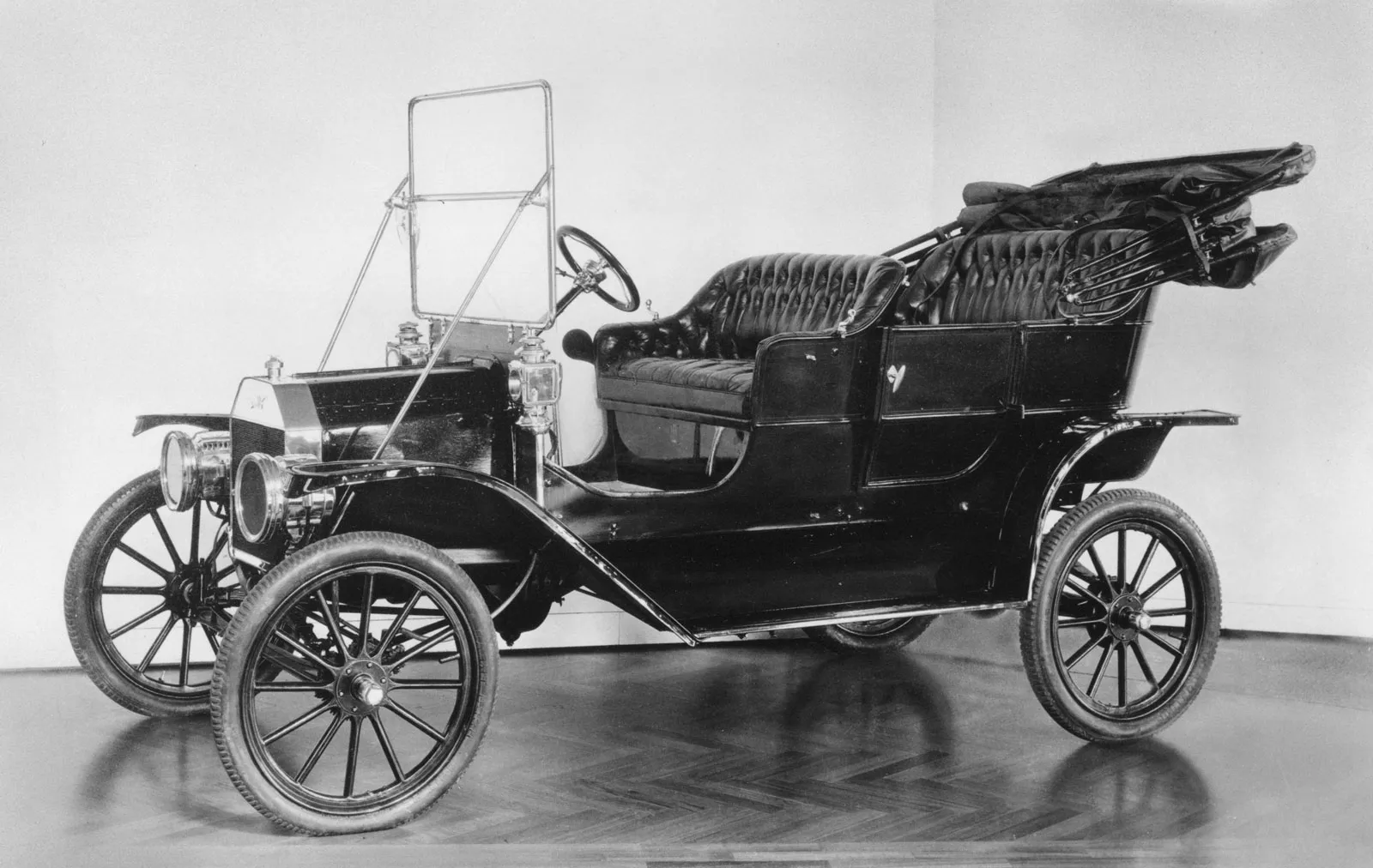
The Model T was built on a straightforward 100-inch wheelbase chassis, which managed to be both lightweight and exceptionally durable due to Ford’s innovative use of vanadium steel. Its 56-inch track width matched that of a horse-drawn wagon, allowing it to navigate the deeply rutted dirt roads common at the time.
Power came from a 20-horsepower, 2,896cc sidevalve four-cylinder engine, while a user-friendly two-speed planetary transmission simplified the driving experience. The Model T earned a reputation for being rugged, dependable, and accessible—qualities that introduced millions of people to the world of automobiles.
Though it appeared simple, the Model T featured some remarkably advanced engineering for its era. Notably, its four-cylinder engine block was cast as a single unit with a detachable cylinder head, a notable innovation at a time when most manufacturers still produced fixed-head cylinders in pairs.
The car also employed a unique three-point engine mounting system—a triangulated setup that was also applied to the axles—to shield the drivetrain from the twisting stresses inflicted by poor road conditions. While buyers initially had a variety of color options, Ford standardized production to black only in 1913 to simplify manufacturing.
The very first Model T—bearing serial number 1—was built on September 27, 1908, as a 1909 model and shipped just days later on October 1. By the close of the 1909 model year on July 31, Ford had produced approximately 10,600 units, including 7,728 examples of the $850 Touring model.
3. Ford Escort (1968)
Over 20 Million Units
Although the Escort was primarily a European model, it did have a limited run in the United States between 1980 and 2003. The car gained legendary status largely because of the MK1 Escort, which was compact, affordable, and most importantly, rear-wheel drive.
These traits made it an ideal platform for those looking to compete in both amateur and professional rally events. The MK1 also achieved notable success on race tracks, quickly becoming the go-to small car throughout the late 1960s and 1970s.
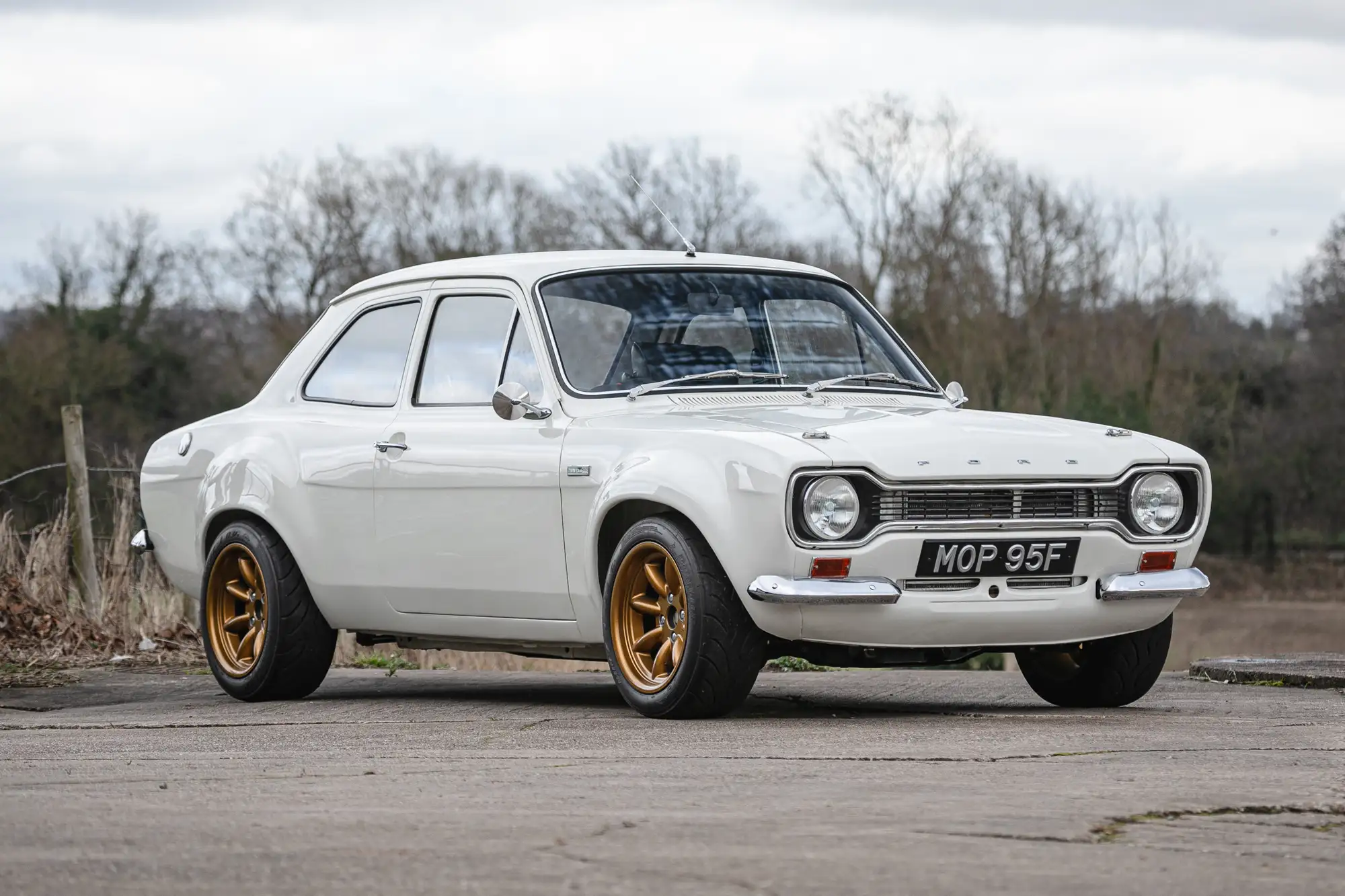
The Escort’s rally dominance continued beyond the MK1, but began to wane with the release of the MK3, which came only in a front-wheel-drive configuration.
Nevertheless, the Escort’s strong reputation helped sustain the model’s popularity, allowing it to remain in production until the early 2000s.
There’s an unmistakable charm to racing series from the 1960s—an era that many enthusiasts believe represents the golden peak of driving skill and motorsport technology. While racing had existed for decades before, something about that particular decade felt like a perfect storm of mechanical innovation, fearless competition, and raw driving talent.
During this time, American automaker Ford established itself as a dominant force across multiple racing formats. By assembling some of the top engineering minds of the era, the Blue Oval became a formidable presence, from homegrown U.S. circuits to the demanding Le Mans endurance race and even the fiercely competitive British motorsport scene.
In the UK, one of Ford’s standout performers was the Escort Mk1—a compact car with an outsized reputation on the track. Numerous teams fielded Escorts in competition, but few found as much success as Alan Mann Racing.
Founded in 1964, Alan Mann Racing quickly made a name for itself in both endurance and touring car championships. The team campaigned a range of Ford models including the Falcon, Mustang, GT40, and Cortina, but the Escort Mk1 was the car that truly cemented its legacy.
Modified by Mann’s team to comply with FIA Group 5 regulations, the Escort became a dominant force, winning the British Saloon Car Championship in both 1968 and 1969. Like many icons of that era, the car faded from public consciousness once its time on the track ended. But now, it’s being brought back to life in spectacular fashion.
The revival comes courtesy of Boreham Motorworks, an official Ford brand licensee that specializes in resurrecting classic Ford race cars. Making waves late last year, the company introduced the Escort Mk1 RS “continumod”—a faithful recreation of the legendary racer, built with a deep respect for its historic roots.
2. Ford Fiesta (1976)
22 Million Units
Although the Ford Fiesta only had a brief presence in the American market with the sixth generation, the model has been in existence since 1973.
Ford developed this compact car during the World Oil Crisis, a time when there was a significant increase in demand for smaller and more fuel-efficient vehicles.
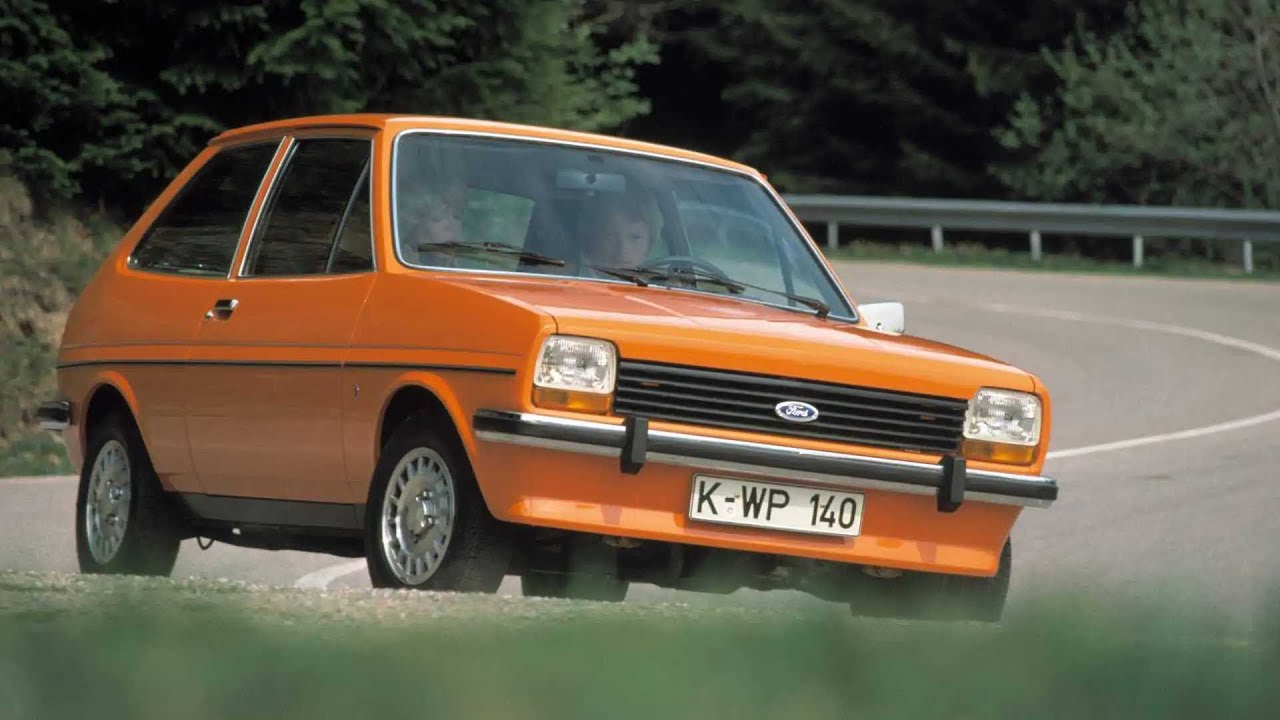
The car was nearly named the Bravo, but at the last moment, Henry Ford II opted for the name ‘Fiesta,’ even though General Motors held the naming rights at the time. To date, Ford has sold over 22 million Fiestas.
Much like the Focus, the Fiesta was eventually discontinued in favor of a crossover. The Fiesta project kicked off in 1972 when Henry Ford II gave the green light for a compact, front-wheel-drive car designed to serve as a global model.
Ford’s engineering team had observed the rising popularity of front-wheel-drive vehicles in the marketplace. In fact, the company had already found success in Europe with the Taunus, which had featured that drivetrain layout since 1960. However, the upcoming Fiesta would be even smaller, making it an ideal candidate for the same engine-transmission setup.
Ford aimed to make the Fiesta an affordable car, but not a dull one. The design featured compact, rectangular headlights with separate turn signals placed just beneath them—a styling direction that was new for the brand.
A black plastic grille with horizontal slats stretched between the headlights, sitting above a metal bumper, while a longer apron continued the theme below.
From the side, the slightly arched, upward-sloping beltline became a defining design trait of the small hatchback. At the rear, the car boasted a wide-opening tailgate flanked by vertically aligned, slim taillights.
The interior followed the same minimalist philosophy as the exterior. A flat dashboard offered an open storage compartment in front of the passenger seat.
The instrument panel included two large circular gauges for the speedometer and tachometer, along with a smaller dial for the fuel level. The flat front seats were adequate for daily use, though not particularly noteworthy. Surprisingly, the rear seats provided enough space to accommodate two adults comfortably.
Under the hood, Ford offered a range of four engines, delivering between 45 hp and 83 hp. The XR2 variant received the most powerful option from that lineup.
1. Ford F-Series (1948)
Over 41 Million Units
Few things are as quintessentially American as the Ford F-150, which has been a part of the automotive landscape for more than 76 years, first emerging from the assembly line as the F-3 model.
Interestingly, the first actual F-150 didn’t debut until 1976, and since then, it has held the title of America’s best-selling pickup truck for over forty years.
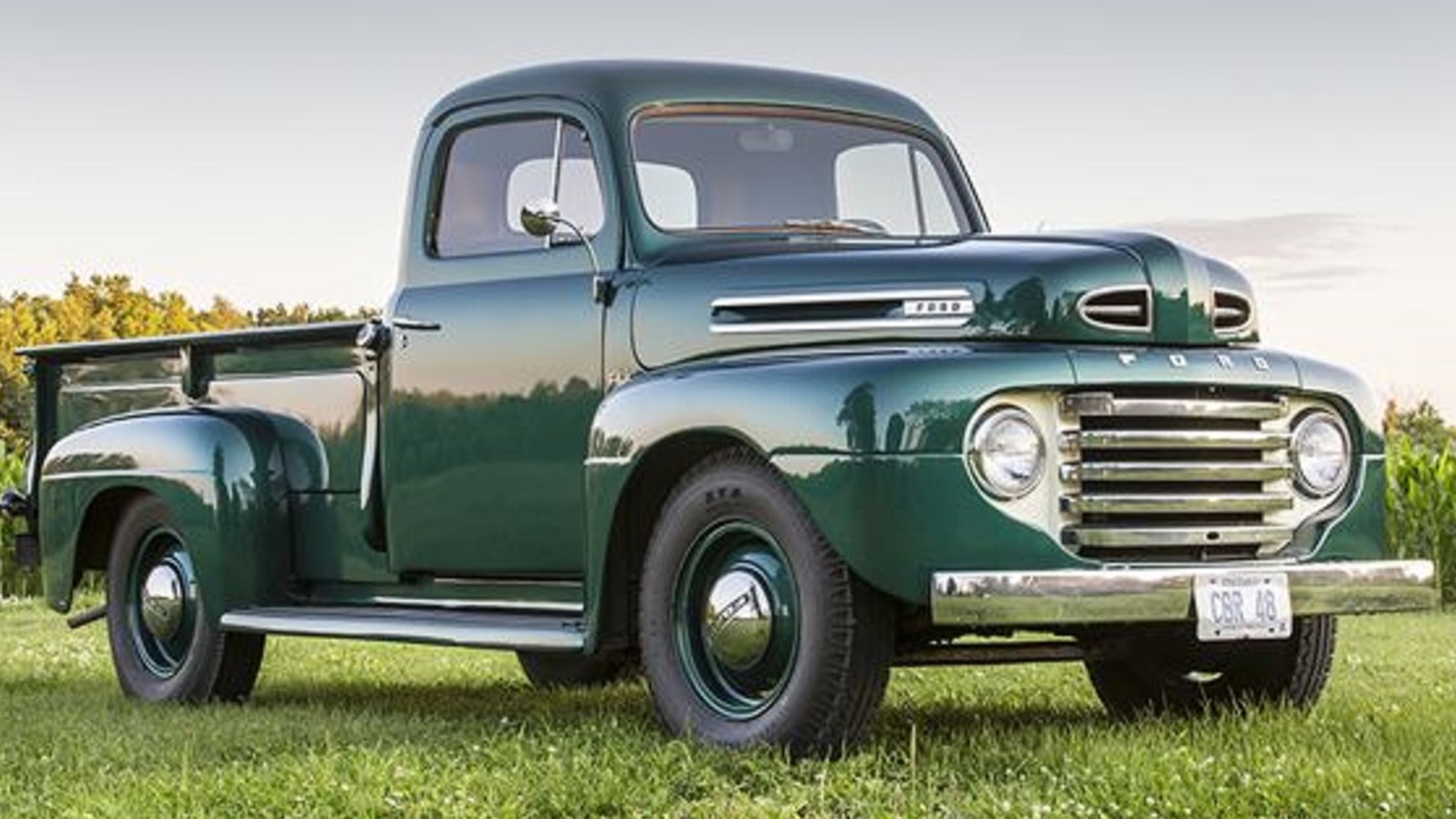
The F-Series generates such immense revenue that it could theoretically operate as its own standalone car company. As you can see, it has nearly twice the sales of the previous vehicle on this list, despite that one being a compact, affordable hatchback.
What makes its success even more remarkable is the fact that the F-150 is predominantly a North American vehicle, with only very limited exports to international markets. In essence, the American market alone is responsible for the vast majority of the 40 million units sold.
There’s something undeniably special about the 1948 Ford truck—particularly the F1 model—that continues to tug at the hearts of car enthusiasts. Maybe it’s the way the grille seems to grin back at you, or the wave of nostalgia that hits anyone who’s ever driven one or watched it cruise down a quiet country road.
This truck is more than just a combination of steel and rubber—it’s a rolling emblem of post-war American innovation, toughness, and classic design, all wrapped up in a no-nonsense, hardworking package.
For Ford enthusiasts, the F1 ranks among the company’s most cherished vehicles, right up there with icons like the Crown Victoria. It’s a model that has endured through generations, earning a dedicated following that hasn’t wavered—even as automotive technology has evolved drastically.
In today’s world of computerized, sleekly styled vehicles, it might seem surprising that something so simple and utilitarian still captures attention. But the truth is, the 1948 Ford F1 has cemented itself as an American icon, and in 2025, it holds that title as firmly as ever.
Under the hood, the F1 offered buyers a choice between a 3.7-liter inline-six producing 95 horsepower and a 3.9-liter V8 generating 100 horsepower. Its 114-inch wheelbase supported a total length of just over 189 inches and a width of nearly 76 inches, with a height of 75.63 inches.
The truck had a gross vehicle weight rating of 4,700 pounds and rode on parallel leaf springs at both the front and rear. A three-speed manual transmission sent power to the wheels, and braking was handled by hydraulic drum brakes.
The F1’s cargo bed stretched 6.5 feet and offered 45 cubic feet of storage space, backed by a steel cab and a wooden subfloor. With a fuel capacity of 17 gallons and peak torque of 180 lb-ft (for the V8), the F1 was capable of reaching a top speed of around 65 mph—plenty for its era.
Whether it’s the mechanical simplicity, the rugged capability, or the old-school charm, there’s no denying that the ’48 Ford F1 remains a timeless machine. It’s not just a truck—it’s a legacy on wheels.
Also Read: 10 Vehicles With Best Long-Term Fuel Economy That Save You Money Year After Year
Biggest Ford’s Flops Ever Built
Ever since Henry Ford transformed automobile production with the introduction of the Model T in 1908, the carmaker that bears his name has remained one of the most influential forces in the global automotive industry.
Ford has been responsible for creating some of the most iconic vehicles in American history, with the Mustang continuing to hold its title as the world’s best-selling sports car nearly sixty years after its debut.
The brand also boasts a number of legendary models that have since been retired, leaving fans eagerly hoping for their return. But for every beloved classic like the Thunderbird, Gran Torino, or RS200, there are just as many Ford vehicles that are best left in the past.
Some of these cars were plagued by design flaws, others failed miserably in the marketplace, and a few were simply dreadful to drive.
There are even certain models that Ford would likely rather forget altogether particularly those tied to scandals in which the company was caught misleading customers, sometimes with tragic results.
Regardless of the specific reason behind their failure, these nine vehicles collectively highlight the most regrettable chapters in the long and storied history of Ford Motor Company.
5. Ford Focus’ Dual-Clutch Transmission
While the Ford Focus has garnered a loyal following, especially in Europe where it remains a strong seller despite the declining popularity of hatchbacks, the car’s DPS6 dual-clutch transmission is widely regarded as a catastrophic failure.
Focus models produced between 2012 and 2016, as well as Fiestas built between 2011 and 2016, experienced a range of issues with the transmission.
These problems included “shuddering, slipping, bucking, jerking, hesitation while changing gears, premature internal wear, delays in downshifting, and, in some cases, sudden or delayed acceleration,” according to a lawsuit filed against Ford.

In response to these claims, Ford eventually agreed to extend the warranties on the affected vehicles.
However, this decision came only after further reports revealed that the company had been aware of the defect for years yet chose to ignore it in order to continue shifting inventory.
Additionally, Ford had secretly issued instructions to dealers to fix the problem without informing customers.
This episode proved to be highly damaging for Ford, costing the company significant sums in the short term and potentially causing long-term harm by alienating a substantial number of repeat customers.
4. Ford Five Hundred
While it wasn’t a complete failure like some of the other vehicles on this list, the Ford Five Hundred stands as a symbol of the company’s cautious approach during the mid-2000s and the resulting stagnation in its sedan lineup. It represents the peak of playing it safe in design and performance.
With a dull exterior, a sluggish transmission that one reviewer noted as simply “oozing forward,” and an outdated V6 engine borrowed from the previous-generation Taurus, the Five Hundred offered little to excite.
It did provide ample interior space, decent fuel economy, and an acceptable though never thrilling driving experience. However, there was hardly any compelling reason to remember the car, let alone purchase one.
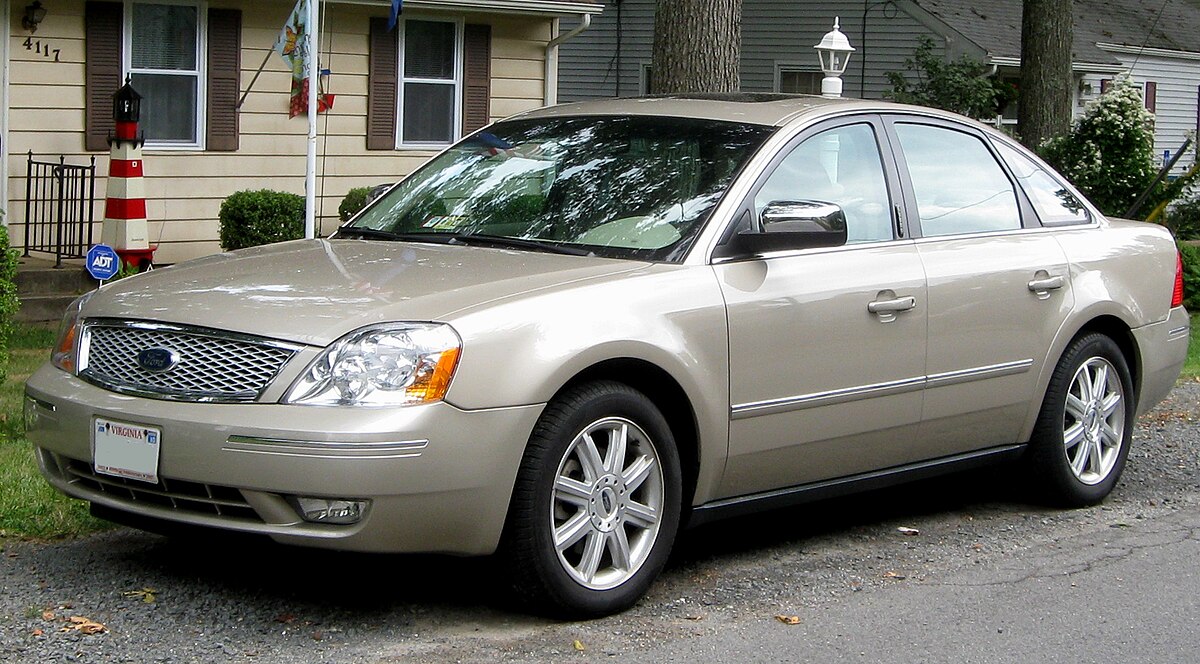
It’s also important to remember that the Five Hundred was launched during a period when SUVs were rapidly gaining popularity, often at the expense of sedans like Ford’s own Taurus.
At a time when Ford needed a bold, attention-grabbing sedan to revive interest in the segment, this was the best it could offer.
Meanwhile, Chrysler introduced the 300C, a far more distinctive vehicle that proved successful enough to remain in production for 17 years, only ending after the 2023 model year.
Although the Five Hundred was positioned as a direct competitor to the 300C, its overwhelming blandness ensured it was discontinued after just three years.
3. Ford Th!nk City
While Ford has recently made waves and stirred some controversy with the launch of its Mustang Mach-E and F-150 Lightning EVs, the company’s earlier ventures into electric vehicles were equally contentious.
In the mid-1990s, a Norwegian startup named Pivco developed an electric microcar but lacked the capital to bring it to market (via The Drive).
Ford stepped in to support the struggling firm by purchasing a majority stake, rebranding the vehicle as the Ford Th!nk City. It was officially unveiled at the 2000 North American International Auto Show, and production followed soon after.
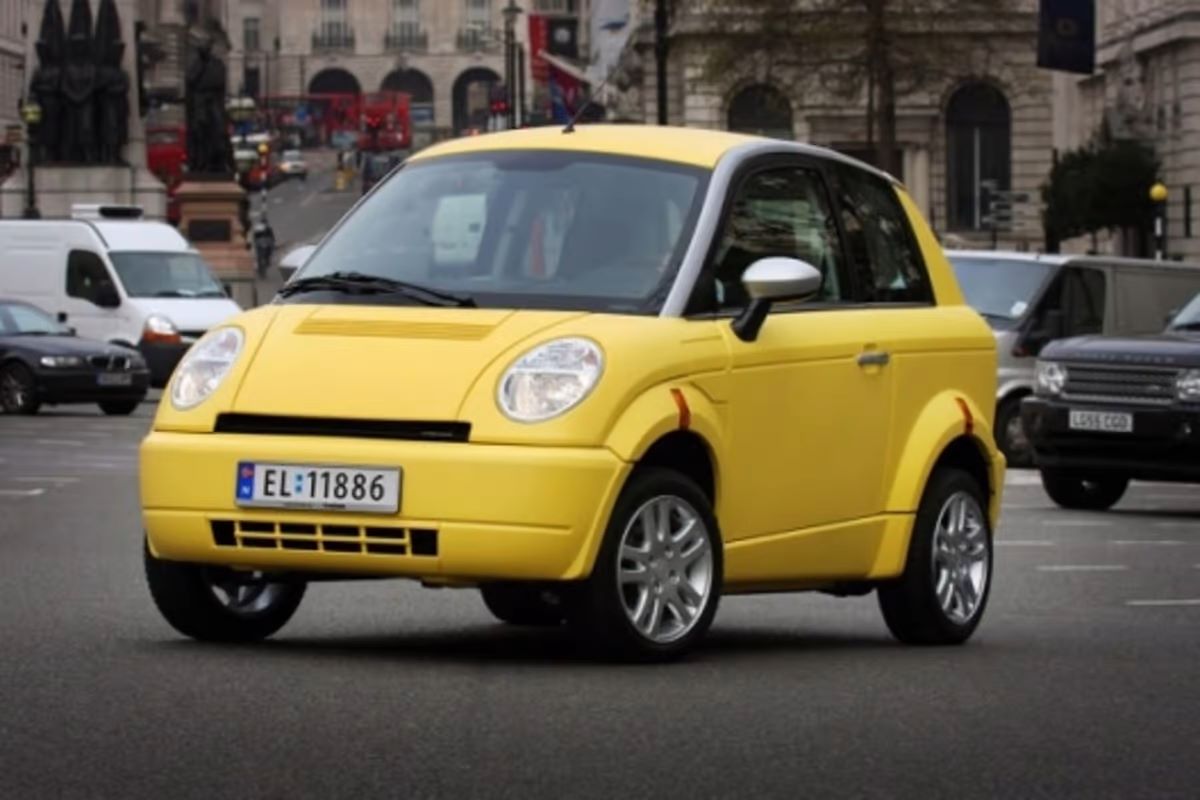
However, the project was short-lived. Just two years later, the Th!nk City was discontinued, with only 1,005 units ever produced.
In 2003, Ford sold its stake in the company, after investing more than $100 million in development costs.
The Th!nk City was simply never suited to the American market its tiny size, limited range, and low top speed made it impractical for most U.S. drivers.
Still, it’s unfortunate that Ford didn’t make a stronger push to market the Th!nk City in Europe, where small, efficient cars are far more popular, especially in densely populated cities with narrow streets.
2. Ford Mustang II
While every generation of the Mustang brings its own set of strengths and weaknesses, there’s a general consensus that the Mustang II is the low point of the lineup.
Built on the same platform as the Ford Pinto, the Mustang II saw Ford executives drop the previous generation’s V8 engine in favor of four-cylinder and V6 options.
A V8 did return in 1975, but due to stringent emissions regulations, it managed to produce only 140 horsepower.
That performance made it one of the slowest Mustangs ever created, yet it’s easy to overlook the fact that the car was actually well-received when it debuted.
Ford’s president at the time, Lee Iacocca, noted that the original Mustang had grown increasingly bloated with each passing year, leading consumers to want something smaller and lighter.
The Mustang II met those expectations, and although it lacked the muscle many enthusiasts wanted, the oil crisis of the era meant that a more powerful car likely wouldn’t have passed emissions standards anyway.
Over the years, the Mustang II has come to embody the flaws of the so-called “malaise era.” Though it’s certainly a misstep when judged purely as a sports car or a Mustang, it’s more accurately seen as a reflection of its era than a complete failure by Ford.
I’ll openly admit to being a longtime Ford Mustang enthusiast, having owned three of them over the years. While owning a Mustang II was never a long-standing dream, I’ve always had a soft spot for the underappreciated and overlooked—so it’s no surprise that I came very close to purchasing this 1977 Cobra II just a few weeks ago.
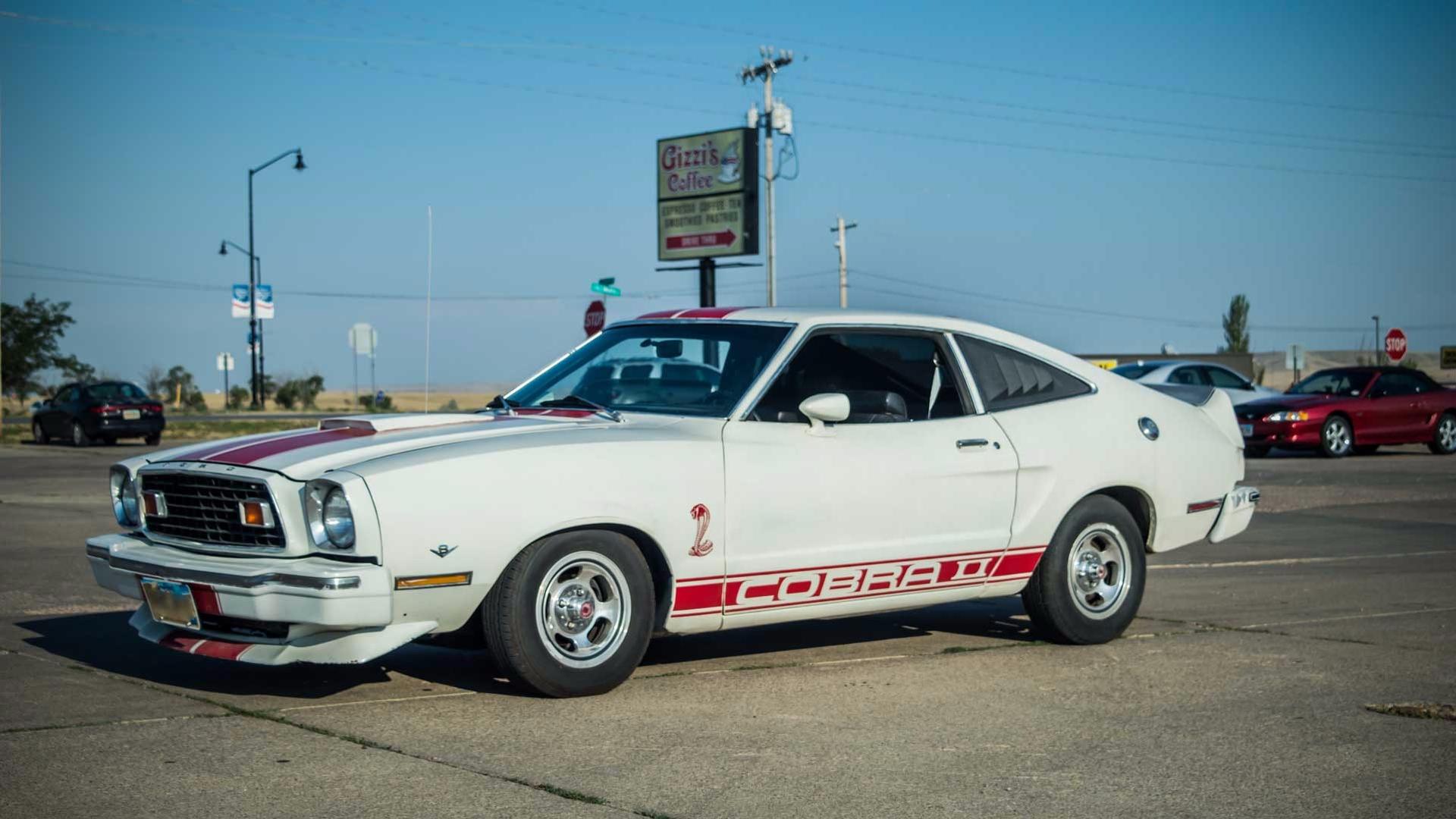
Part of the appeal lies in the styling—I genuinely love how these cars look, and I’m not at all embarrassed to say it. The base models are relatively unremarkable, but the Cobra IIs and King Cobras, with their window louvers, aggressive chin spoilers, bold striping, and over-the-top graphics, are peak 1970s charm.
I also know I’m not alone in my appreciation, because Ford managed to move 1.1 million units between 1974 and 1978, which clearly means there’s a fanbase out there.
Another factor? Mustang IIs don’t carry the same deadly reputation as some of their muscle-bound predecessors. So when this particular Cobra popped up for sale right in my South Dakota neighborhood for $4,000, I felt morally obligated to at least give it a look.
If you find my unapologetic love for the Mustang II inspiring enough to start your own hunt for what’s widely considered the most ridiculed Mustang ever built, here’s what you need to know.
Four grand is the typical asking price for a running, mostly rust-free Cobra II that still needs some TLC. The most critical thing to watch for is rust—these cars, like many from the ‘70s, were notorious for falling apart when exposed to road salt or ocean air.
Unlike the Chevrolet Camaro or Pontiac Trans Am from the same era, replacement body panels for Mustang IIs aren’t as readily available. That’s why a careful inspection for rust or signs of previous bodywork should be your first step.
Focus on the lower areas of the doors, the rear quarter panels, around the hood scoops, and under the rear hatch if it’s a fastback. If you notice wavy urethane bumpers, it’s a red flag that the steel underneath may be corroded.
Mechanically, the Cobra II is a bit more forgiving. The 5.0-liter V8 under the hood is essentially the same engine Ford used for years across various models, which means both replacement parts and performance upgrades are easy to come by and relatively inexpensive.
In its original form, the engine delivered around 120 horsepower, which isn’t much—but drop about $1,000 into performance modifications, and you can easily push past 300 horsepower.
That’s more than enough to move a 2,700-pound car with authority. Avoid the four-cylinder and V6 versions—they just don’t cut it. Let’s be honest: if you’re already prepared to explain your decision to buy a Mustang II, at least make sure it’s got the right engine to back it up.
1. Ford EcoSport
Ford’s decision to phase out its smaller cars, even the best-selling ones, in favor of SUVs and crossovers may prove to be a riskier strategy than the company’s board anticipates.
While it’s true that consumers are increasingly favoring these body styles over traditional sedans and hatchbacks, Ford’s recently discontinued small EcoSport SUV simply didn’t measure up, and its sales figures reflected that.
In 2020, Ford sold only around 60,000 units, with the numbers dropping even further in 2021. It was no surprise, then, when the vehicle was discontinued in mid-2022.
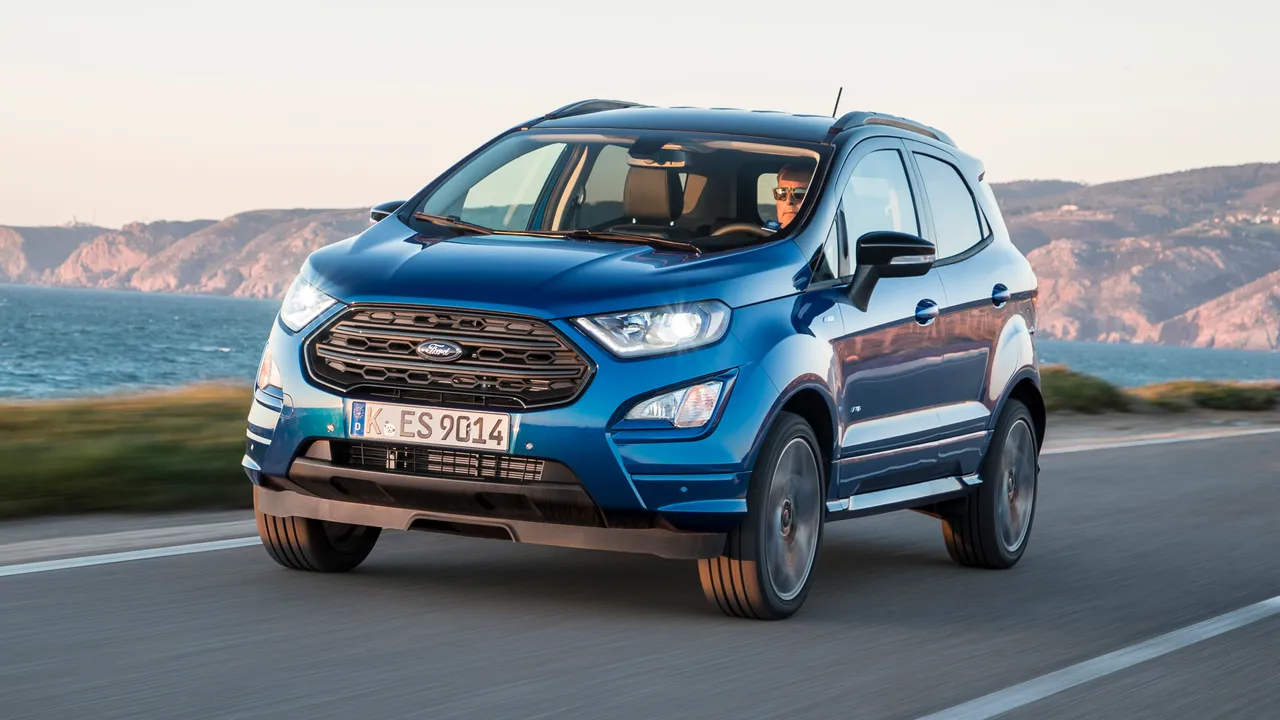
Many reviewers who had the unfortunate task of writing about the EcoSport reached similar conclusions. Car and Driver ranked it “dead last in its competitive class,” while Auto Express criticized the car’s “poor interior quality” and “uninspiring road manners.”
Driving Line even went so far as to call it “the worst new car in America” just before it was discontinued.
If this is the standard of small car that buyers can expect after Ford eliminates its remaining global lineup of hatchbacks and superminis, there’s a real risk that customers won’t return to the Blue Oval as the company hopes.

